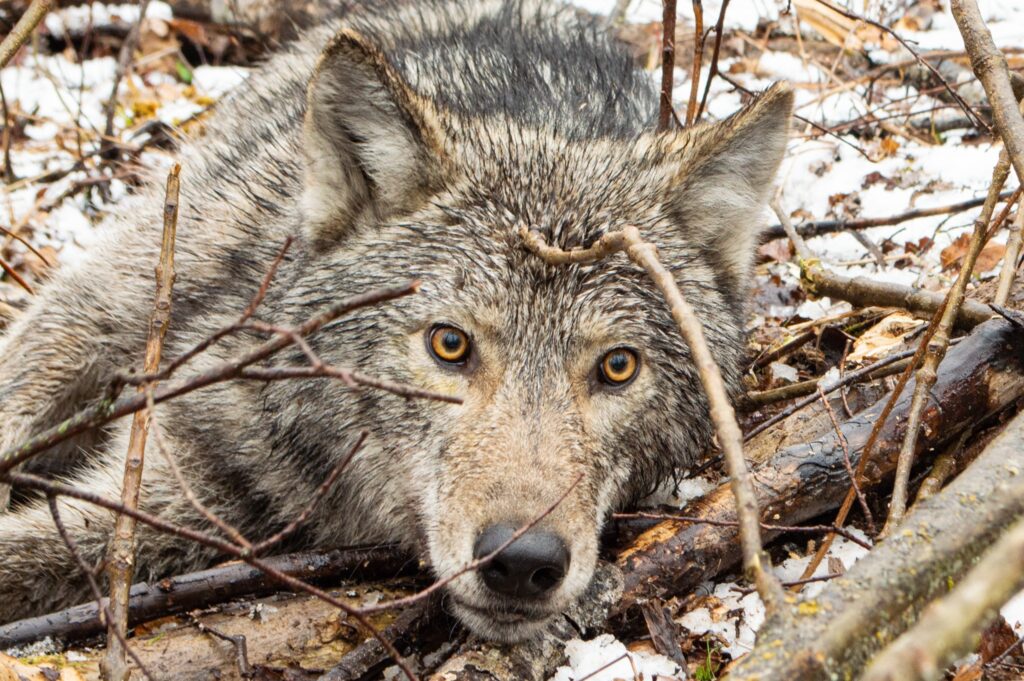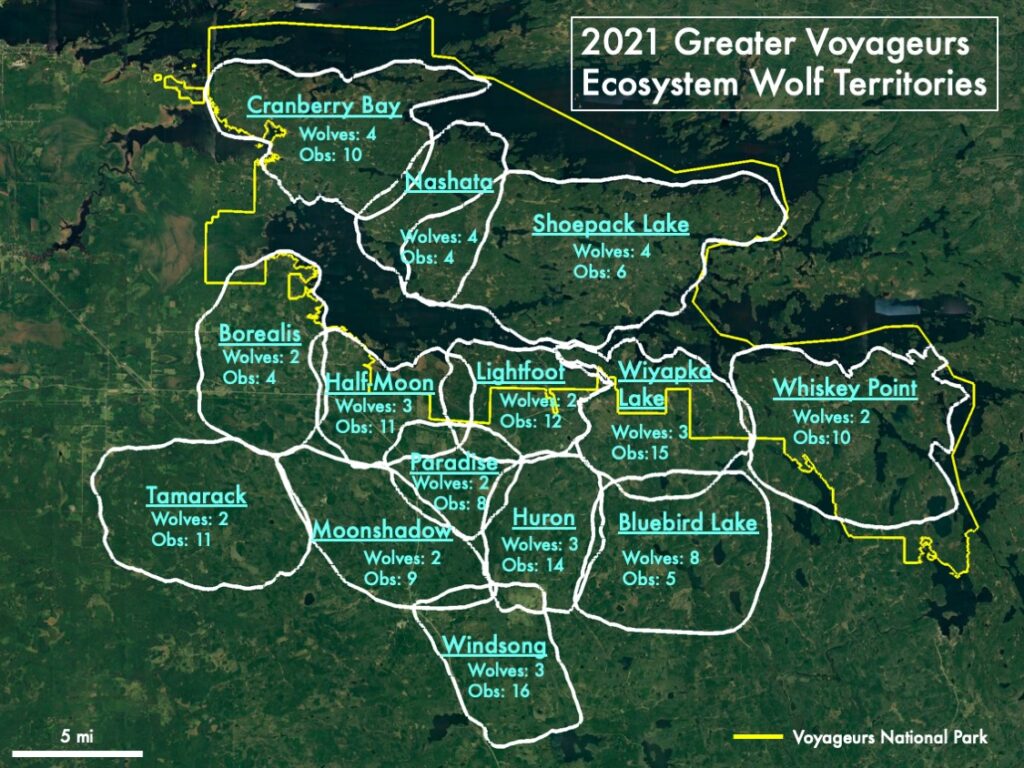The scientists with the Voyageurs Wolf Project in northern Minnesota recently announced their findings about the population of predators in and around Voyageurs National Park. The researchers have used GPS tracking collars for several years, and dedicated significant time to visiting sites used by wolves. Now, they are also using thousands of images taken by remote cameras, with many wolves bearing identifiable ear tags, to learn more about the animals’ lives. It has allowed them to measure and monitor pack and territory sizes and other key factors.

According to the report, the region is densely populated with wolves. The researchers, led by Thomas Gable, Austin Homkes, and Joseph Bump, counted 14 packs across nearly 700 square miles. There are approximately 45 wolves per 1,000 square kilometers (386 square miles) in what is called the Greater Voyageurs Ecosystem.
The Voyageurs Wolf Project is a University of Minnesota program supported by the Minnesota Environment and Natural Resources Trust Fund.

The researchers found that the average pack size was slightly higher than a year before, but remains below long-term averages. The average pack territory was 78 square kilometers (30 square miles), also below average. “In previous years, wolf packs were larger (~5 wolves) but occupied larger territories,” the research group said. “This year smaller wolf packs occupied smaller territories which means that overall population density remains similar.”
The scientists say the small pack sizes are likely because of low survival rates of pups in the most recent period. The team documented numerous cases where wolves had multiple pups in the spring of 2020, but none survived to fall.
Meanwhile, observations of the wolves also indicated their territories aren’t as firm yet as in the past. For example, two packs regularly visited the same beach in the middle of one of the pack’s territory.
“It is possible that territorial boundaries are still getting sorted out amongst these packs now that Nashata has taken up residence in part of the Shoepack Lake territory,” the report reads.
In the constant push and pull of life and death in the boreal ecosystem, the wolves responded by shrinking their territories and their pack sizes. The scientists say the overall number of wolves didn’t change very much.
More information:

